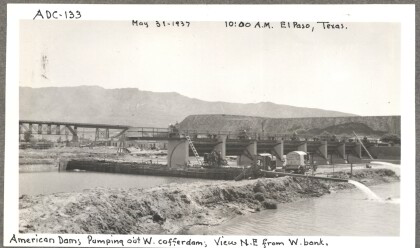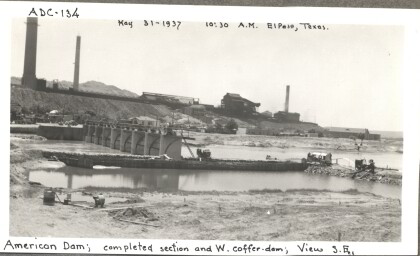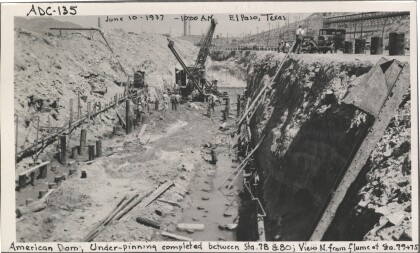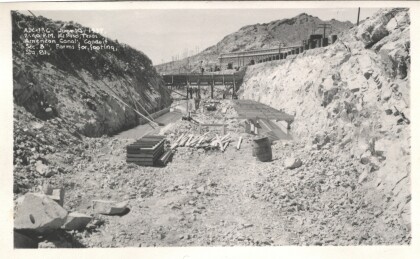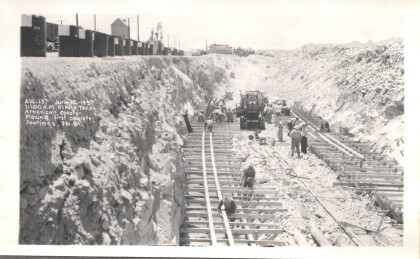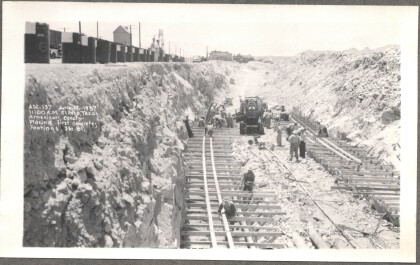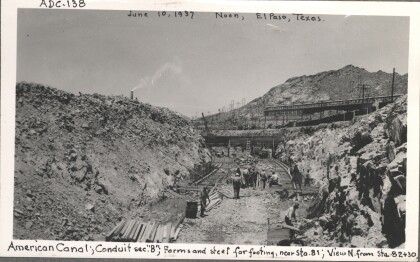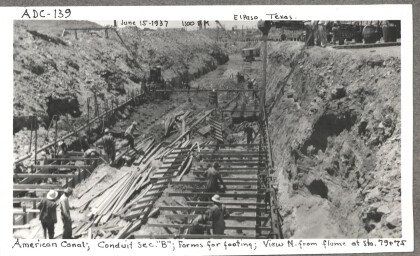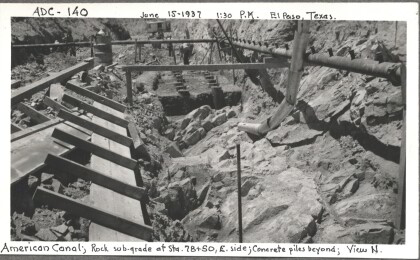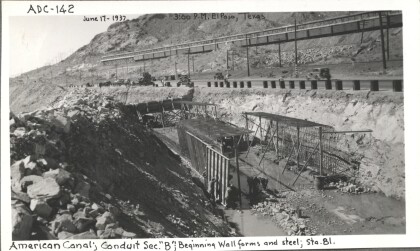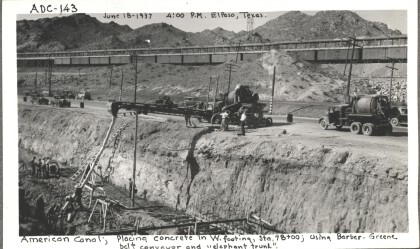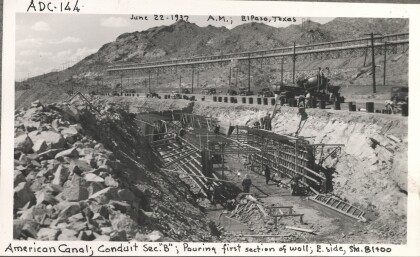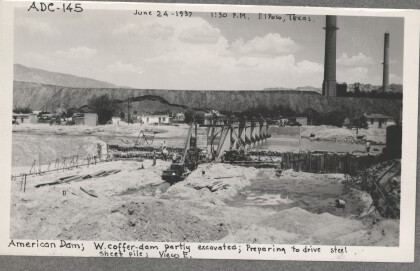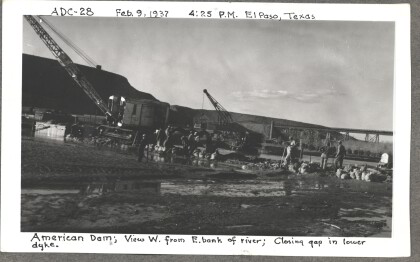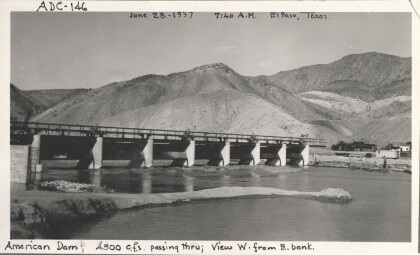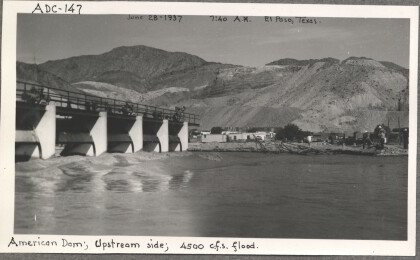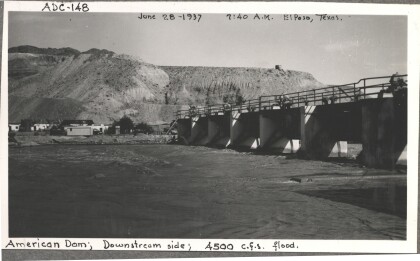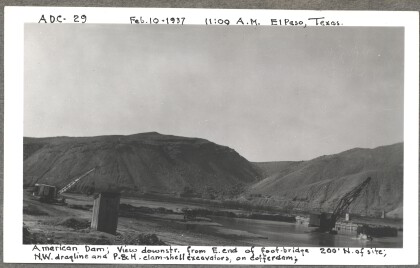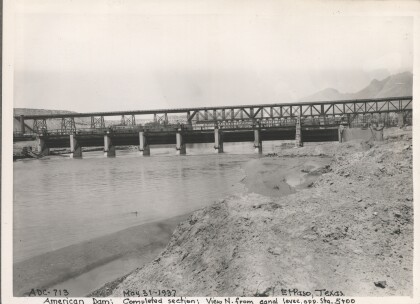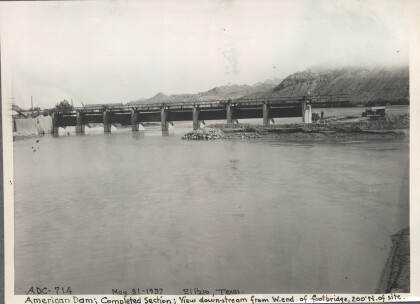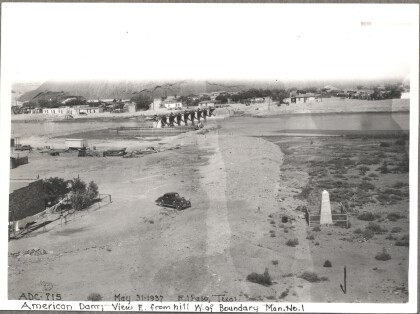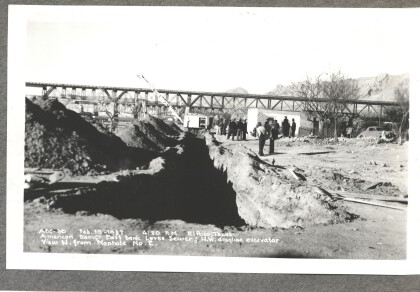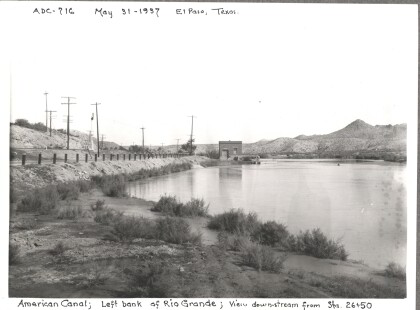Rio Grande and Smelting Plant
Rio Grande y Planta de Fundicion
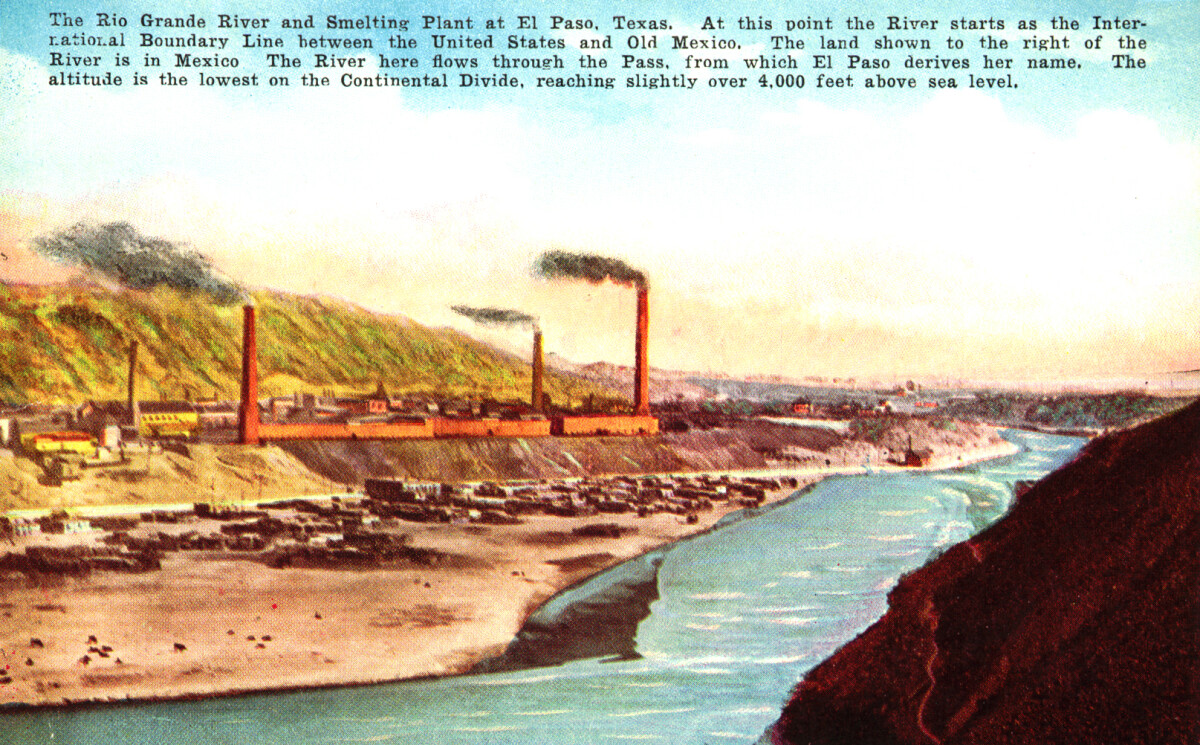
Rio Grande and Smelting Plant
The postcard probably dates from the 1910s. On the top it says: "The Rio Grande River and Smelting Plant at El Paso, Texas. At this point the River starts as the International Boundary Line between the United States and Old Mexico. The land shown to the right of the River is in Mexico. The River here flows through the Pass, from which El Paso derives her name. The altitude is the lowest on the Continental Divide, reaching slightly over 4,000 feet above sea level." On the other side of the River Smeltertown can be seen. It was an industrial area, which came into being with the construction in 1887 of the Kansas City Consolidated Smelting and Refining Company (later the American Smelting and Refining Company, or ASARCO) copper and lead smelter. In the 1880s the Mexican employees of the smelter began building houses west of the smelter, beside the Rio Grande. In 1945 the El Paso Herald-Post called attention to the poverty in Smeltertown and in the early 1970s it gained a measure of unwanted fame, when it became the center of an environmental controversy. It was found out that the majority of the residents there were suffering from lead poisoning due to a huge amount of lead emission during 1969 and 1971. In May 1975 an injunction ordered ASARCO to modernize and make environmental improvements, which eventually cost some $120 million. Against their wishes the residents were forced to move; their former homes were razed, leaving only the abandoned school and church buildings to mark the site of El Paso's first major industrial community.
Report this entry
More from the same community-collection
American Dam - Closing gap in lower dyke
American Dam - View west from east bank of river; closing gap in ...
American Dam - Dragline and excavators on coffer-dam
American Dam - View downstream from east end of foot-bridge. ...
